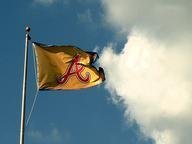Quiz Answer Key and Fun Facts
1. Amphion, along with his twin brother Zethus, are figures in Greek mythology who became the rulers of which city-state?
2. The brightest object in the constellation Auriga is a multiple star system, but what is it called?
3. The Aurochs is an extinct mammal related to which domestic livestock animal?
4. Alcide is the spelling in French and Italian of an alternative name for which hero of Greek mythology?
5. Alderney is the Channel Island geographically closest to France, sitting just 15km from which French peninsula?
6. In Christianity, an anchorite is someone who withdraws from secular society for a solitary life of prayer. In some areas, when the anchorite began their life, the local bishop would recite which prayer cycle?
7. Tradition says that Saint Andrew was crucified on an 'x'-shaped cross in which Roman occupied city in Greece?
8. Although Aeneas was a minor figure in Greek mythology, in the Roman tradition he came to the fore with the publication of the "Aeneid", an epic poem telling his story by which poet?
9. Alaric I was a major figure of Late Antiquity who, having been a soldier, later became the first king of which Gothic people?
10. In Greek mythology, Artemis, along with her twin brother Apollo, was born on which island in the Cyclades?
Source: Author
Red_John
This quiz was reviewed by FunTrivia editor
trident before going online.
Any errors found in FunTrivia content are routinely corrected through our feedback system.
